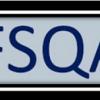Hi Everyone,
BRCGS Compliance Report 2022 was published last month, I thought members may be interested in the most common non-conformances from 2022. There is a predominance of non-conformances against section 4.4 Building Fabric, 4.9.1.1 Chemical Control is again amongst the top ten as it was in 2021 which may be a surprise to some and clause 3.9.2 Traceability coding has appeared in the top ten in 2022.
Below are the details and the requirements that sites have failed to meet in their certification audit.
BRCGS Food Standard Top 10 Non-Conformances in 2022
 BRCGS Food Standard - Top 10 NCs 2022.png 249.84KB
2 downloads
BRCGS Food Standard - Top 10 NCs 2022.png 249.84KB
2 downloads
4.11.1 Premises and equipment hygiene
The premises and equipment shall be maintained in a clean and hygienic condition.
4.6.1 Equipment construction & maintenance
All equipment shall be constructed of appropriate materials. The design and placement of equipment shall ensure it can be effectively cleaned and maintained.
4.4.8 Doors
Doors (both internal and external) shall be maintained in good condition. At a minimum:
• external doors and dock levellers shall be close fitting or adequately proofed
• external doors to open product areas shall not be opened during production periods except in emergencies
• where external doors to enclosed product areas are opened, suitable precautions shall be taken to prevent pest ingress.
4.9.1.1 Chemical controls
Processes shall be in place to manage the use, storage and handling of non-food chemicals to prevent chemical contamination. These shall include, at a minimum:
• an approved list of chemicals for purchase
• availability of material safety data sheets and specifications
• confirmation of suitability for use in a food-processing environment
• avoidance of strongly scented products
• the labelling and/or identification of containers of chemicals at all times
• a designated storage area with restricted access to authorised personnel
• use by trained personnel only.
4.4.1 Walls
Walls shall be finished and maintained to prevent the accumulation of dirt, minimise condensation and mould growth, and facilitate cleaning.
4.4.4 Ceilings
Ceilings and overheads shall be constructed, finished and maintained to prevent the risk of product contamination.
3.9.2 Traceability coding
Identification of raw materials (including primary packaging), intermediate/semi-processed products, part-used materials, finished products and materials pending investigation shall be adequate to ensure traceability.
4.4.2 Floors
Floors shall be suitably hard-wearing to meet the demands of the process, and withstand cleaning materials and methods. They shall be impervious, be maintained in good repair and facilitate cleaning.
4.15.1 Storage facilities
Procedures to maintain product safety and quality during storage shall be developed on the basis of risk assessment, understood by relevant staff and implemented accordingly. These may include, as appropriate:
• managing chilled and frozen product transfer between temperature-controlled areas
• segregation of products where necessary to avoid cross-contamination (physical, microbiological or allergens) or taint uptake
• storing materials off the floor and away from walls
• specific handling or stacking requirements to prevent product damage.
2.7.1 Hazard identification
The HACCP food safety team shall identify and record all the potential hazards that are reasonably expected to occur at each step in relation to product, process and facilities. This shall include hazards present in raw materials, those introduced during the process or surviving the process steps, and consideration of the following types of hazard:
• microbiological
• physical contamination
• chemical and radiological contamination
• fraud (e.g. substitution or deliberate/intentional adulteration)
• malicious contamination of products
• allergen risks (see section 5.3).
It shall also take account of the preceding and following steps in the process chain.
Source of Non-conformance Information - BRCGS Compliance Report 2022
Kind regards,
Tony
















